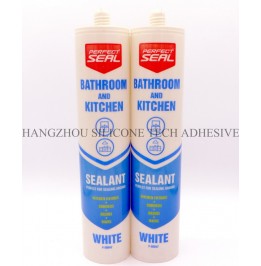Sealants are widely used in construction and home improvement projects to create airtight and watertight seals. However, improper handling or inadequate cleanup of sealant residues can pose significant health risks. Understanding these risks and adopting preventive measures is crucial for ensuring safety during and after sealant applications.

Many sealants, particularly those containing solvents or curing agents, emit volatile organic compounds (VOCs) during and after application. These VOCs can irritate the respiratory system, causing symptoms such as coughing, throat irritation, and shortness of breath. Prolonged exposure to high concentrations of VOCs may lead to chronic respiratory conditions, including bronchitis and asthma exacerbation.
For instance, certain silicone-based sealants release low levels of acetic acid during curing, which can cause mild respiratory discomfort. More concerning are solvent-based sealants, such as those containing toluene or xylene, which emit stronger VOCs linked to neurological effects and long-term organ damage. Workers and homeowners should prioritize sealants labeled "low-VOC" or "water-based" and ensure adequate ventilation during application and curing phases.
Direct contact with uncured sealant residues can cause skin and eye irritation. The chemical composition of sealants, including solvents, plasticizers, and curing agents, may strip natural oils from the skin, leading to dryness, redness, or chemical burns. For example, polyurethane sealants often contain isocyanates, which are potent skin irritants and sensitizers. Repeated exposure can trigger allergic reactions, such as contact dermatitis, characterized by itching, blisters, and swelling.
Eye exposure to sealant residues is equally hazardous. Splashes or airborne particles can cause chemical conjunctivitis, resulting in redness, tearing, and sensitivity to light. In severe cases, corneal abrasions or ulcers may occur. Protective gear, including nitrile gloves, safety goggles, and long-sleeved clothing, is essential to minimize skin and eye contact. If contact occurs, immediately rinse the affected area with water for at least 15 minutes and seek medical attention if symptoms persist.
Chronic exposure to sealant residues, particularly those containing toxic additives, may increase the risk of long-term health issues. Some sealants incorporate plasticizers like phthalates or heavy metals such as lead, which are linked to endocrine disruption, reproductive harm, and developmental delays in children. For example, certain epoxy-based sealants contain bisphenol A (BPA), a known endocrine disruptor associated with hormonal imbalances and cancer.
Occupational studies have highlighted the risks faced by construction workers and manufacturers exposed to sealant fumes over extended periods. Symptoms such as headaches, dizziness, and nausea may indicate acute toxicity, while chronic exposure has been associated with liver and kidney dysfunction. To mitigate these risks, employers should provide training on safe handling practices, including the use of personal protective equipment (PPE) and adherence to exposure limits set by regulatory agencies.
Minimizing health risks from sealant residues requires a combination of product selection, workspace preparation, and protective measures. Prioritize sealants with eco-friendly certifications, such as Green Seal or ENERGY STAR, which indicate compliance with strict VOC emission standards. Before application, ensure the workspace is well-ventilated by opening windows, using exhaust fans, or setting up air purifiers with HEPA filters.
During application, wear appropriate PPE, including respirators rated for organic vapors, chemical-resistant gloves, and full-face shields. Apply sealants in thin, even layers to reduce curing time and VOC emissions. After application, allow sufficient time for curing in a ventilated area before reoccupying the space. Clean tools and surfaces promptly with solvent-free cleaners or mild detergents to prevent residue buildup.
For homeowners, avoid applying sealants in enclosed spaces or during occupancy. If residues remain after curing, gently scrape off excess material with plastic tools and wipe surfaces with a damp cloth. Dispose of sealant containers and waste according to local hazardous material regulations. By following these guidelines, individuals can enjoy the benefits of sealants while safeguarding their health and the environment.
Copyright 2019 by Hangzhou Silicone Tech Adhesive Co., Ltd. All rights reserved.
Bathroom Sealant | Acrylic Sealant | Dow Corning 795 | Aquarium Sealant | Dow Corning 732 | Clear Silicone Sealant | Polysulfide Sealant | Glazing Sealant | Mirror Sealant | IG Sealant
Powered by Onepound